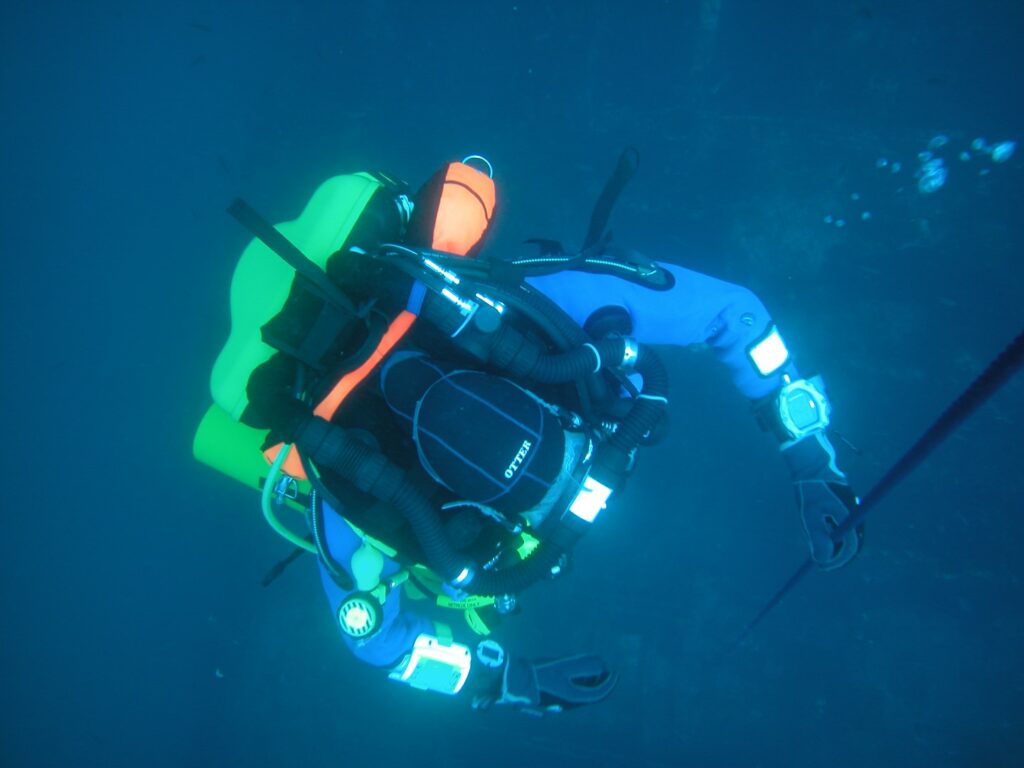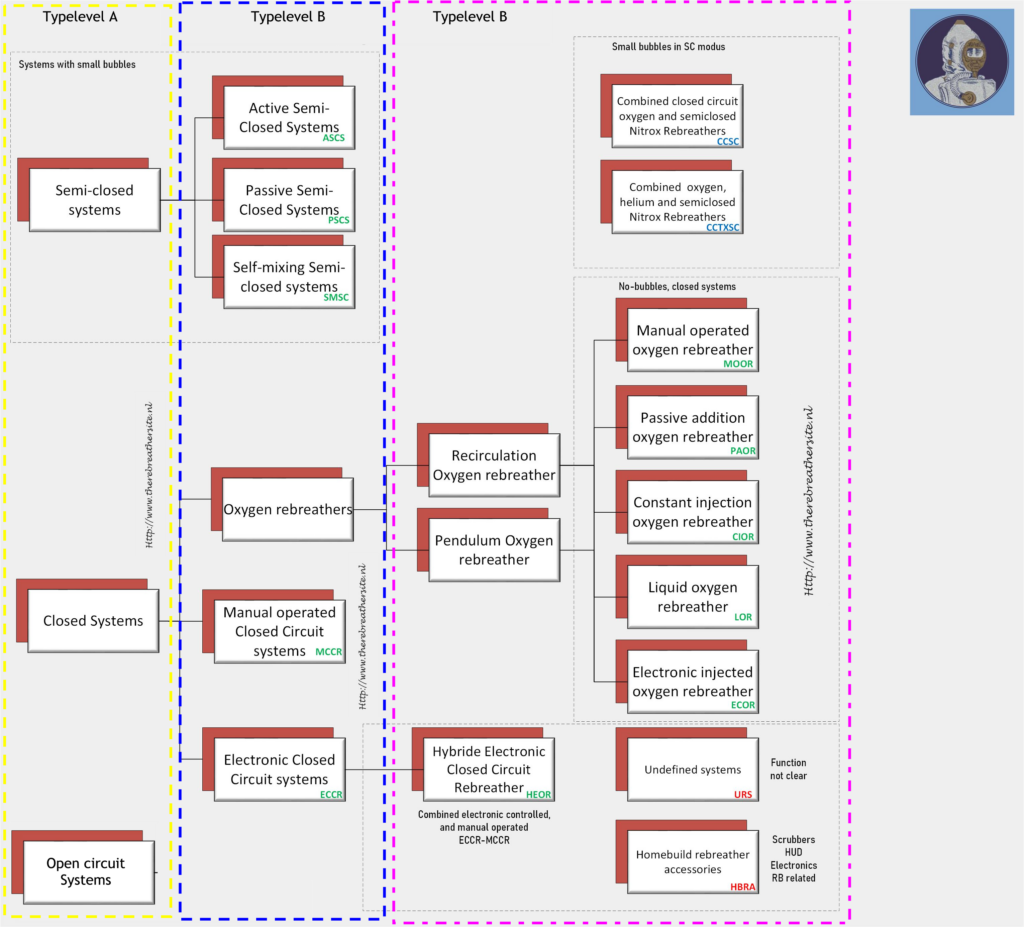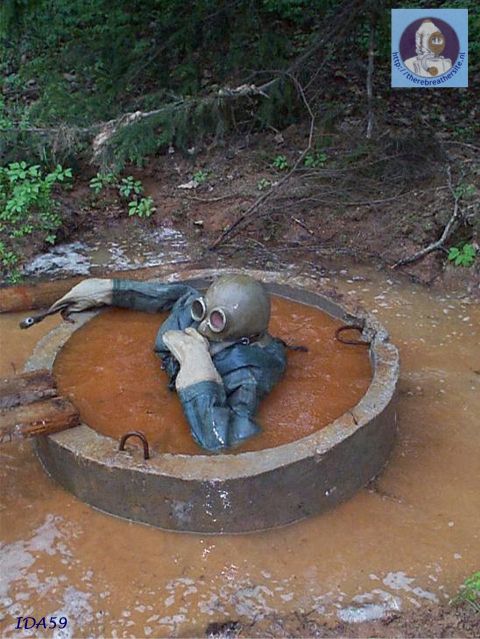

Rebreather types explained
To explain all types of rebreathers in one page is an almost impossible task. Many systems are technically different and have their own specific characteristics. A rebreather is a breathing apparatus in which the gas or part of the gas is reused. The definition could be more extensive, but let’s start with this. An important factor is where the rebreather is used. There are a large number of atmospheres or even missing atmospheres for which rebreathers have been developed. Let us take a closer look at some of them. It is obvious that a rebreather is used where a person cannot breathe normally. This can be in a smoky environment, an environment with a lower oxygen content or an environment with a medium such as water. Even in an environment where there is no oxygen at all, a rebreather is an excellent way to breathe. On this page we will look further into the application areas for rebreathers: link
To form an overview of the systems, we make a classification into open systems, semi-closed systems and closed systems.
This Typelevel A classification is the most basic classification we can make.

If we then limit the three main groups to rebreathers, we see that open circuit systems are not included. In open systems, the inhaled gas is discharged directly into the environment and not recirculated. The reuse of the gas is therefore a condition for talking about a rebreather.
So now two groups remain, the semiclosed systems and the closed systems. Let’s look at the semiclosed systems first.
Semiclosed Systems
In this group we see as a characteristic that a small part of the gas is replaced each time. In fact you could say that a part of the gas is replaced by fresh gas each time. As a result, gas bubbles will escape from underwater every now and then in this type of system. Semi closed systems are also called half-closed systems, although this is not the best name. These systems have another subcategory in the diagram above, which is called Type-Level B in a blue box. The three variants we see there are distinguished by the way the gas is fed into the circuit.
The so-called Active systems have one gas cylinder in which the mixture which is breathed in is located. Active means that the unit continuously injects a certain amount of gas independent of the gas demand of the user. If too much gas is injected, it will escape via an overpressure valve to the surrounding atmosphere.
The Passive Semiclosed systems are breathing apparatus where the gas is dosed through a system that matches the breathing requirement of the user to the injection dose. If the user breathes faster, the gas will be injected faster. Within the passive systems there are again various techniques available that will be explained later in this vademecum. ACSC and DCSC are types of these different systems.
The self-mixing Semiclosed rebreather is an older technique in which two gases are mixed in a certain ratio that can be influenced by breathing frequency and/or ambient pressure. The two gases together provide the right mix. The danger with this system is that one of the two gases runs out and a mixture with a toxic composition is inhaled.
Closed Rebreather Systems
Closed breathing systems are the most commonly used breathing systems. The reason for this is the very wide application in mining and in the fire service. Oxygen rebreathers are usually closed systems that are excellent for use under atmospheric pressure in an environment with toxic vapours or gases. The other types of closed systems are often used for underwater applications where two different gases are combined.
Oxygen rebreathers are relatively simple systems where oxygen is added to the breathing loop through a wide variety of injection techniques (see Type Group C). A system usually consists of three basic elements: a counter lung, an oxygen cylinder and a scrubber. The breathing gas is passed through the scrubber by means of a pendulum breath or through the counter-lung(s) by means of a circular breathing configuration.
Manual controlled Closed circuit rebreathers can be normal oxygen rebreathers where the gas is injected manually. We also know MCCR (manually controlled closed circuit) rebreathers where there is a continuous injection of gas and a manual addition of oxygen. These MCCR systems usually have a diluent and oxygen gascylinder. By mixing these two gases in the right way, a diver can use this to dive to great depths. The cash injection is often provided by a needle valve or an orifice with a very small hole that limits the gas supply.
Electronic Closed Circuit rebreathers ECCR are breathing systems that use computer technology. These computers control a solenoid. The computers are controlled by a gas measurement system. The gas measurement system consists of a number of oxygen cells that measure the composition of the gas. As soon as the oxygen content drops, the computer will control the solenoid that injects oxygen into the circuit. If the diver breathes faster, the injection will be more frequent. During the dive, no bubbles are vented to the environment and the dive is completely ‘closed’. This technique has also been used during trips to the moon.


Therebreathersite was founded by Jan Willem Bech in 1999. After a diving career of many years, he decided to start technical diving in 1999. He immediately noticed that at that time there was almost no website that contained the history of closed breathing systems. The start for the website led to a huge collection that offered about 1,300 pages of information until 2019. In 2019, a fresh start was made with the website now freely available online for everyone. Therebreathersite is a source of information for divers, researchers, technicians and students. I hope you enjoy browsing the content!
